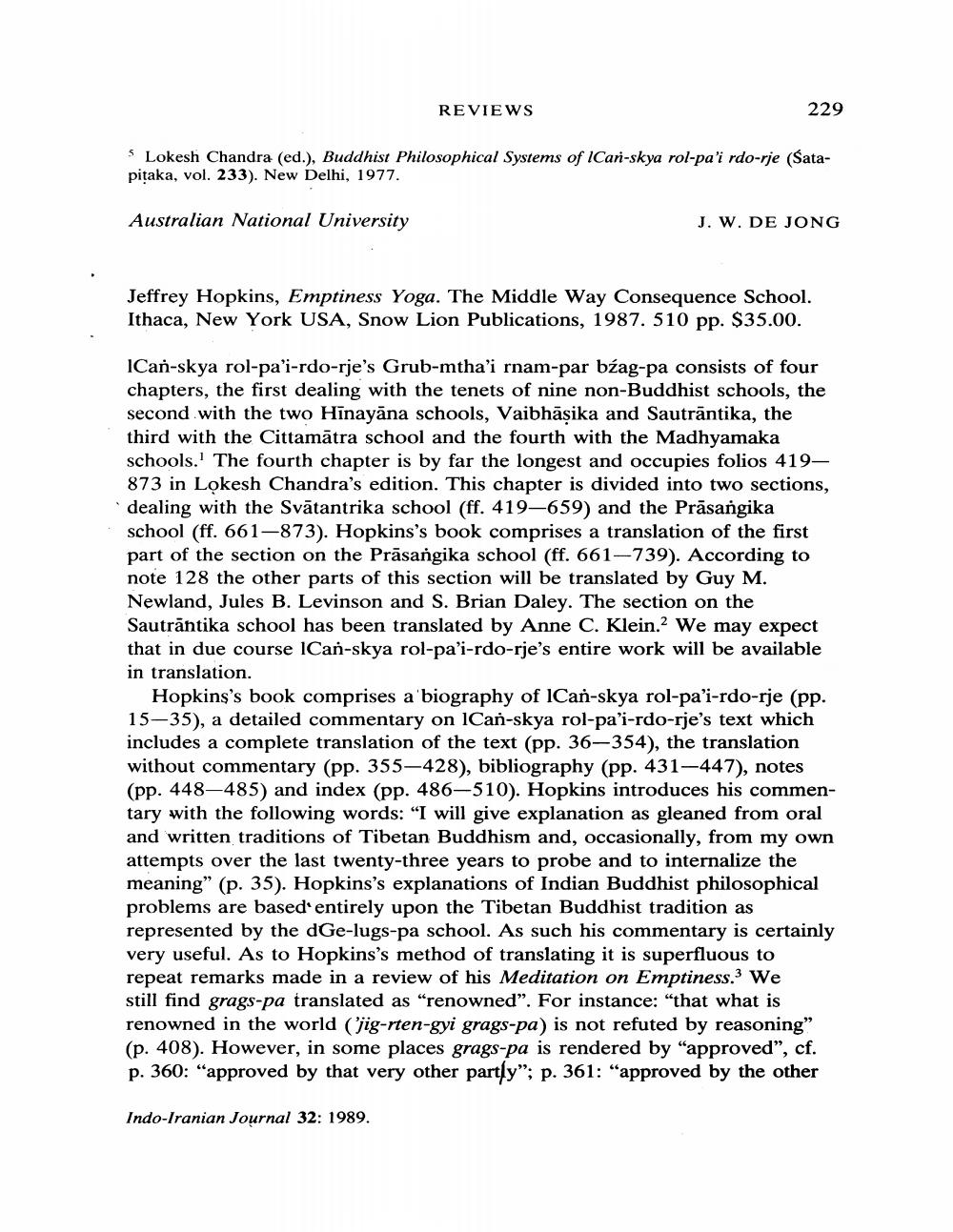________________
REVIEWS
229
5 Lokesh Chandra (ed.), Buddhist Philosophical Systems of iCan-skya rol-pa'i rdo-rje (Satapitaka, vol. 233). New Delhi, 1977.
Australian National University
J. W. DE JONG
Jeffrey Hopkins, Emptiness Yoga. The Middle Way Consequence School. Ithaca, New York USA, Snow Lion Publications, 1987. 510 pp. $35.00.
Can-skya rol-pa'i-rdo-rje's Grub-mtha'i rnam-par béag-pa consists of four chapters, the first dealing with the tenets of nine non-Buddhist schools, the second with the two Hīnayāna schools, Vaibhāșika and Sautrāntika, the third with the Cittamātra school and the fourth with the Madhyamaka schools. The fourth chapter is by far the longest and occupies folios 419– 873 in Lokesh Chandra's edition. This chapter is divided into two sections, dealing with the Svātantrika school (ff. 419–659) and the Prāsangika school (ff. 661-873). Hopkins's book comprises a translation of the first part of the section on the Prāsangika school (ff. 661-739). According to note 128 the other parts of this section will be translated by Guy M. Newland, Jules B. Levinson and S. Brian Daley. The section on the Sautrāntika school has been translated by Anne C. Klein. We may expect that in due course ICan-skya rol-pa'i-rdo-rje's entire work will be available in translation.
Hopkins's book comprises a biography of ICan-skya rol-pa'i-rdo-rje (pp. 15-35), a detailed commentary on ICan-skya rol-pa'i-rdo-rje's text which includes a complete translation of the text (pp. 36–354), the translation without commentary (pp. 355—428), bibliography (pp. 431-447), notes (pp. 448–485) and index (pp. 486-510). Hopkins introduces his commentary with the following words: "I will give explanation as gleaned from oral and written traditions of Tibetan Buddhism and, occasionally, from my own attempts over the last twenty-three years to probe and to internalize the meaning” (p. 35). Hopkins's explanations of Indian Buddhist philosophical problems are based' entirely upon the Tibetan Buddhist tradition as represented by the dGe-lugs-pa school. As such his commentary is certainly very useful. As to Hopkins's method of translating it is superfluous to repeat remarks made in a review of his Meditation on Emptiness. We still find grags-pa translated as "renowned”. For instance: “that what is renowned in the world ('jig-rten-gyi grags-pa) is not refuted by reasoning" (p. 408). However, in some places grags-pa is rendered by "approved", cf. p. 360: "approved by that very other partly"; p. 361: "approved by the other
Indo-Iranian Journal 32: 1989.




